How many visits will be necessary?
The total number of treatments can vary widely based on the individual, and on the nature of their condition. For new symptoms in a relatively healthy individual (e.g., low back pain due to sacroiliac joint dysfunction), sometimes 2 or 3 visits are enough to resolve the symptoms. For chronic issues complicated by degenerative conditions (e.g., degenerative disc disease, osteoarthritis), the patient may require ongoing care over a period of 6-12 months before their symptoms are reduced to a level they find acceptable.
In our experience, if osteopathic treatment is going to help with the condition, the patient will typically notice some improvement within 3-6 visits. If there has been no change in symptoms after 6 appointments, the condition is unlikely to respond to continued osteopathic treatment. In such cases, we recommend that the patient return to their family physician or medical specialist for further evaluation.
How often should I get treatment?
At the beginning of your treatment program, we recommend 1 visit per week for the first 3-6 weeks. If continued care is required after those initial treatments, your visits will gradually be spaced further apart as your symptoms improve.
When scheduling your initial assessment at our clinic, we strongly recommend booking a series of at least 3 appointments spaced 1 week apart. This will ensure your treatment program can proceed without interruption. Finding an available appointment on short notice is often difficult, so it is best to plan several weeks in advance and book accordingly.
Once symptoms have disappeared or have been reduced to a level the patient finds acceptable, some clients choose to schedule “maintenance” visits a few times per year to prevent a recurrence. Other clients choose to discontinue treatment and return only when they experience new symptoms. Both approaches are perfectly acceptable.
Will the treatments be painful?
Manual osteopathic treatment is typically very gentle, and most techniques should be quite comfortable for the patient. In our experience, if a technique is particularly painful for the client, it will most likely aggravate their symptoms. An osteopathic manual practitioner should have the ability to modify the technique to make the client more comfortable during treatment.
If you ever experience pain during an osteopathic technique, tell your practitioner immediately so they can alter their approach or arrange a more comfortable position for you on the treatment table.
It is common for patients to experience mild discomfort for 1-2 days following osteopathic treatment, as the body integrates the changes and reorganizes itself. Patients often report feeling “a little sore" or having a mild headache the day after their treatment, which then resolves. This is considered a normal part of the process.
If a patient experiences severe pain after treatment, or continues to have significant discomfort 3-4 days after treatment, this is not a normal side effect of osteopathy. Contact your practitioner to determine the need for follow-up. In the case of severe pain, always consult with your family physician or medical specialist to obtain a medical diagnosis. In such cases, there is often an underlying medical issue that is beyond the scope of manual osteopathic treatment.
Do I need a referral from my doctor?
No, a doctor’s referral is not necessary to begin osteopathic treatment. However, we strongly recommend that every patient consult with their family physician or medical specialist to obtain a diagnosis of their condition, and to ask if gentle manual therapy is contraindicated in their particular case.
As a general rule, whenever a patient is experiencing new or unexplained symptoms, or is experiencing severe pain, they should always consult with a doctor to obtain a medical diagnosis and receive necessary medical care prior to seeking manual osteopathic treatment. Osteopathic manual practitioners do not deal with urgent medical issues. For urgent medical problems, always seek help at your local hospital or urgent care centre.
Some group insurance policies may require a doctor’s referral for osteopathic treatment before they will reimburse the client. Check with your group insurance provider to determine whether a doctor’s referral is required under your plan.
What is your cancellation policy?
We require 24 hours’ notice for cancellations or rescheduling. This allows sufficient time for the appointment to be filled by another client. Notice of cancellation should be completed through our online scheduler or by phone to clinic reception, to allow for immediate updating of the schedule. Please do not cancel via email, since this change will not immediately be reflected in our clinic schedule.
Missed appointments and same-day cancellations present one of the most difficult problems for any rehabilitation clinic. Not only does it result in a loss of workable hours for the therapist, it also prevents other patients in the practice from receiving the help they need.
Clients who “no show” or cancel on short notice will be charged a $50 fee for their missed appointment.
* All proceeds from missed appointment fees will be donated to the Kanata Food Cupboard to support Kanata residents in need of food assistance.
Will you do “direct billing” to my group insurance provider?
No, we do not bill insurance companies directly on behalf of the client. We accept payment at the end of each appointment via debit, Visa, or Mastercard. We then provide a treatment receipt that the client can use to submit to their group insurance provider for reimbursement.
Do you deal with Workplace Safety and Insurance Board (WSIB) injury claims?
No, we do not deal with workplace safety and insurance board (WSIB) claims at this time. We recommend visiting a local physiotherapy clinic for rehabilitation covered by WSIB.
Do you deal with motor vehicle accident (MVA) injury claims?
No, we do not deal with motor vehicle accident (MVA) claims processed through Ontario’s Health Claims for Auto Insurance (HCAI) service at this time. We recommend visiting a local physiotherapy clinic for MVA rehabilitation covered by HCAI.





